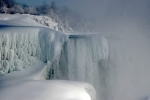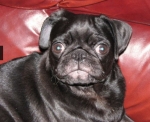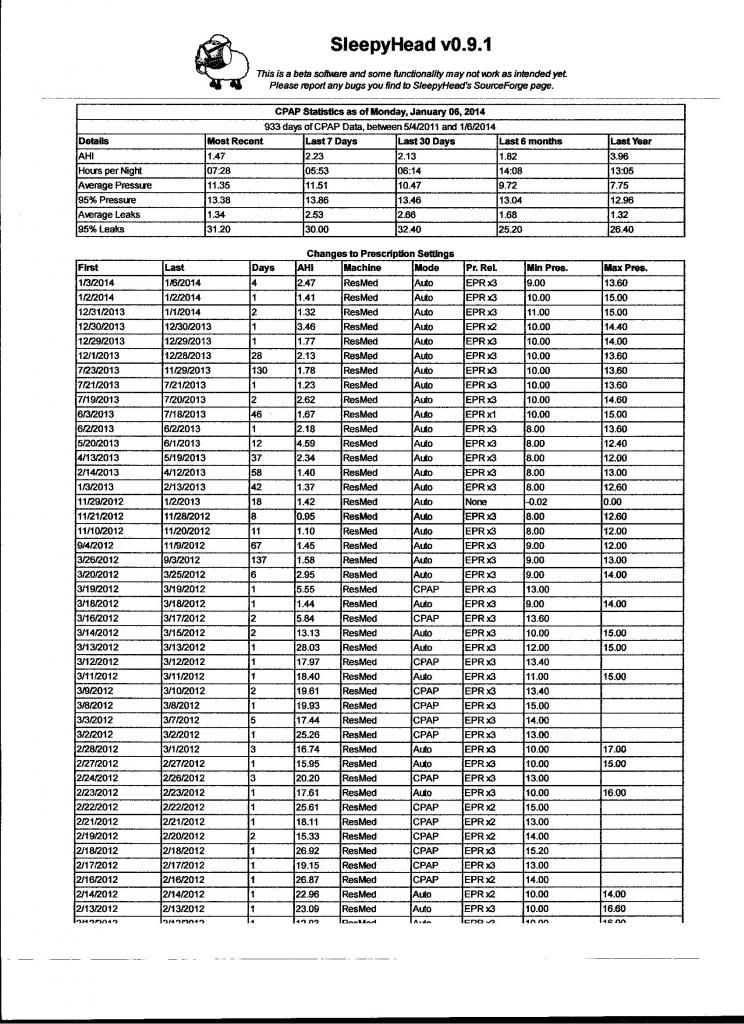palmer1121,
First just some feedback on
what data to provide. The Flow Rate and Event tables are missing here and they would have been quite useful to include. The mask pressure graph gives us no meaningful data, so turn it off. If the Flow Rate graph and the Event table are included, then the AHI graph is also unneeded. So turn off those graphs and include at least the Flow Rate graph in the future.
palmer1121 wrote:
1. leaks: not bad : Min: 0, med: 2.4 but 95% is 43.95. this seems to correlate to when I experience AHI episodes. Also with an overall AHI of .88 , should I be concerned with the leaks? why is the 95% so high, should correlate and be lower relative to the other findings regarding leaks
Prior to about 7:00, the leaks are manageable---they're below 24 L/min and you are using a Resmed and that's where Resmed draws the line for Large Leaks. But that last hour of data is one very long, large leak. The leak is both large enough and
long enough to potentially affect both the quality of your therapy and the accuracy of the data. Sine the AHI graph shows an increase during this time frame, it looks like three of the five events that were recorded were during the large leak and the other two events were recorded just as the leak was starting to get bad.
The 95% leak rate is so high because you were leaking at a rate of 43.94 L/min for
at least FIVE percent of the night. The 95% of a set of data is the number for which
95 percent of the data lies AT or BELOW this number. And hence
FIVE percent of the data lies AT or ABOVE this number. If you want a more detailed explanation of what a 95% number means, please see my blog post
Average, Median, 95% numbers: A guide to those who don't remember their introductory stats
In your case, it's easy to see that the leaks were (well) above 40 L/min for at least 30-40 minutes out of the night. And the machine was run for 5:40, or about 5.67 hours. Hence your leak rate was above 40 L/min for at least 0.5 hours out of 5.67 hours, which is about 8.8% of the night. My guess is that your 90% leak rate would be much, much lower than 40 L/min. And it's also clear from looking at the leak graph that Mr. Green Smiley Face showed up this morning because Mr. Red Frowny Face shows up only when your leak rate is 24 L/min or more
for at least 30% of the night. (In statistical language, Mr. Red Frowny Face shows up when your 70% leak rate is AT or ABOVE 24 L/min.
So technically, Resmed's engineers would say your big leak is bad, but not bad enough to trigger a "poor mask fit" warning.
My advice on the leaks? If this night is typical, then you don't need to be excessively worried about leaks, but it may be worth trying to do a bit of troubleshooting to see if you can keep the huge leak at the end of the night from getting quite so much out of control. If that large leak woke you up or if you felt like you tossed and turned during that time period, then it's worth putting more effort into troubleshooting the leak.
2. why am I snoring? if i am having less obstruction, shouldn't snoring decrease?
In general snoring does decrease with CPAP, and for some people it's eliminated entirely.
But snoring is often the last thing (rather than the first thing) eliminated by increasing the pressure. Think of it this way: As the pressure is increased during the titration study, the OAs typically turn into Hs and the Hs turn into RERAs, FLs, and snoring. So the OAs are often the first event to disappear during a titration study. They increase the pressure some more and the original OAs that are now Hs turn into RERAs, FL and snoring and the original Hs that are now RERAs, FL, and snoring are eliminated. They increase the pressure some more and the original OA that had been turned into Hs now turn into RERAs and snoring. The AHI is now officially a 0.0 at this pressure and unless they're titrating to eliminate all signs of RERAs, FLs, and snoring, the increases in pressure may stop at this point---particularly if the last pressure increase was very late into the titration study.
Or you simply had a "good" night without much snoring on your titration and they didn't pick up that you might still snore at 11cm of pressure. Or this is a particularly bad night for snoring.
Adding to the considerations is that you are also using EPR and it looks like you have EPR = 3. And in that case, the pressure is only at 8cm when you are exhaling. And it is the pressure on
exhalation that is critically important for controlling or eliminating the snoring.
What to do about the snoring? That depends. If this is a
typical night for the snore graph AND the snoring is waking you up or waking your bed partner up, decreasing EPR to 1 or 2 might fix the problem entirely. But that may also make it harder for you to exhale against the pressure. And so if you don't want to decrease EPR, then a modest 0.5 or 1.0 increase in pressure might help reduce or eliminate the snoring.
3. finally the last 2 weeks I have been having crazy dreams..i mean crazy..all over the place..nothing really to do with people i know but weird scenarios (ex: i was middle school child and we had to have an exterminator to come and remove snake skins from around my house..no one was hurt but there were hundreds of them..weird...Also I just seem very busy when I am sleeping..i can't remember all my dreams but i know a lot is going on. pre c-pap, very few dreams..let a lot crazy ones like now. I have heard that dreaming is good as part the the sleep cycles but when do they start to start to come at a regular pace and i finish 'catching up on them"
This seems like you may be experiencing a bit of REM-rebound. You're dreaming more than normal right now because it's been so long since your body was able to get into REM and stay there. (You did say your REM AHI = 65 on the diagnostic sleep study.) As your body acclimates to PAP, the amount of dreaming should return to normal---not your personal pre-CPAP normal, but normal for high quality sleep. And as you acclimate to CPAP, you'll also probably quit remembering all the dreams in great detail.















